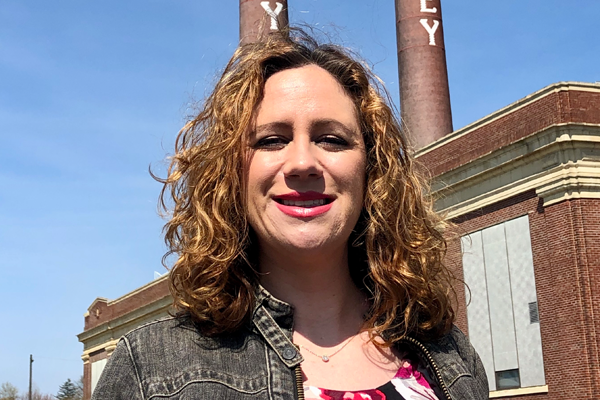By: Nina Notman

“I enjoy supporting my team members in achieving their goals,” explains Kristin Nuzzio. “I'm really excited to see where they will go next within PPG.” She herself has enjoyed five different positions within PPG since she arrived at its Coatings Innovation Center in Allison Park, Pennsylvania, as a research chemist five years ago.
Nuzzio’s route to PPG started with a bachelor’s degree in chemistry and Spanish from the University of Delaware, followed by a PhD in biological solid-state NMR from the University of Illinois at Urbana-Champaign.
Hired through PPG’s university recruiting process, Nuzzio’s first role was to analyze the formulations of paints and coatings for aerospace and industrial coatings customers and identify opportunities to improve PPG’s product offering based on that analytical data. “I like putting pieces of the puzzle together to solve a structure and find out how to make formulations for paints or coatings even better,” she says.”
Two years later, Nuzzio moved into her first supervisory role–leading the high-throughput wet analytical chemistry lab. A stint managing the chromatography and analytical regulatory team followed. Then, in November 2019, she joined a special project team tasked with designing and implementing a laboratory information management system across PPG. “I worked on the development of the analytical management system,” says Nuzzio.
In July 2020, she switched back to a management position, leading a group of formulation scientists. This newly-formed team is looking at the chemistry behind how coatings cure. “We study how changing formulations affects the curing process, and therefore the coating’s properties such as appearance, adhesion and hardness,” says Nuzzio. These insights are then applied to new product development.
What's the best part of your job?
Getting to know my team members and making connections between my team and the broader company to help facilitate projects.
What was the worst part of your job?
There's not enough time in the day to develop all of the great R&D ideas that associates have, at the same time. I’d prefer to proceed with trying everything, but sometimes it doesn't make sense strategically to do things right away.
What advice would you offer other chemists looking to transition into management?
Gain experience on the management side without having direct reports. Try being a mentor to students, or other people in your lab, and see if you like advocating for other people.
What’s the best piece of career advice you've been given?
Never say no to an opportunity that will help you grow and expand your skill set. Even if it's outside of your comfort zone or isn't taking you on a direct path.
Who is your mentor?
I have a few mentors at work, but I would say my dad. My dad is an electrochemist who studies the chemistry of extreme environments. He piqued my interest in science. He is a great sounding board for me for both personal and professional development.
What's the most interesting coating that you've seen?
We have a lot of interesting intumescent coatings for fire protection. During a fire, these coatings form a thick, protective foam that can withstand very high temperatures for a certain time period, while maintaining the structural integrity of the underlying substrate. They are applied to electric vehicle batteries and also steel in buildings to give additional time for people to escape in case of a fire.
What is your favorite element and why?
Vanadium. I studied this element in my very first research project as a sophomore, and it is really cool because it has a nuclear spin of seven halves giving it some very unique properties in NMR spectra.
If you weren't a chemist, what would you like to be?
A graphic designer, I love making figures and exploring different ways to represent information visually.
What do you like to do to relax?
Throughout graduate school, I was a ballet teacher and I still take ballet classes, online now but in person prior to the pandemic. I've also recently taken up floral design and find that really relaxing.
This article has been edited for length and clarity. The opinions expressed in this article are the author's own and do not necessarily reflect the view of their employer or the American Chemical Society.
Copyright 2020 American Chemical Society (All Rights Reserved)











